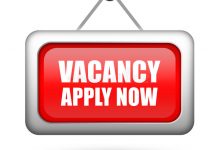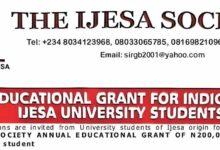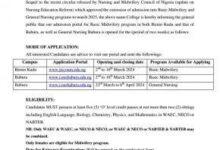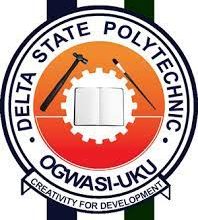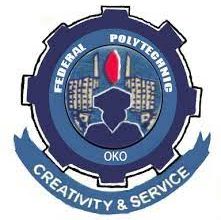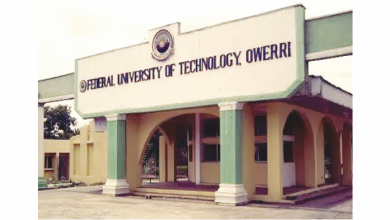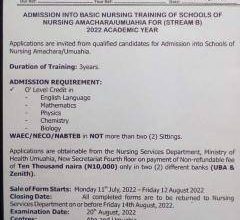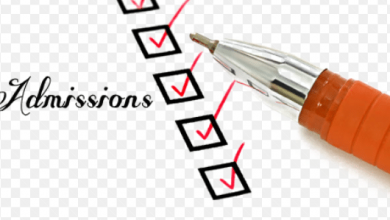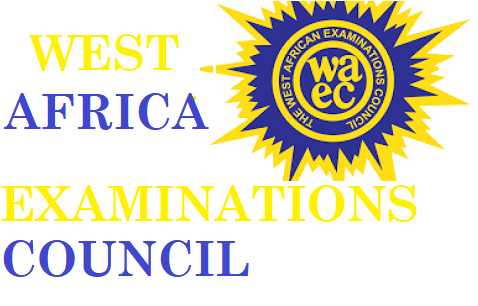
WAEC Syllabus for Cosmetology
WAEC Syllabus for Cosmetology. WAEC Syllabus for Cosmetology is available for all candidates who want to participate in the examination. The West African examination council (WAEC) has officially introduced a syllabus that will guide all the WAEC candidates who wish to write the WAEC examination this year. For a very successful WAEC Cosmetology examination for this year, you need to check out the available areas of concentration. It has been divided into sections with chapters, followed by the topics to be covered in preparation for the exams. In the WAEC Syllabus for Cosmetology, you will also see the format of how the WAEC Cosmetology questions will be presented. Jamb form
There are always 3 sections to answer questions from. Paper 1 is Objective questions, paper 2 is essay questions and then paper 3 section is practical’s. Where paper one (1) carries 40 marks for 40 minutes; paper two (2) carries 1hour 20 minutes for 55 marks, while paper three (3) carries 1 hour and carry 80 marks. Jamb Result
👉 Relocate to Canada Today!
Live, Study and Work in Canada. No Payment is Required! Hurry Now click here to Apply >> Immigrate to Canada
This WAEC syllabus is for both the O’level WAEC and General Certificate Examination (GCE) candidates. Final year students in the senior secondary school level and external candidates are eligible to make use of this syllabus and prepare ahead of the examination. WAEC Syllabus for Cosmetology
See the full detailed information concerning the WAEC Cosmetology Syllabus below.
EXAMINATION SCHEME
There will be three papers, Papers 1, 2 and 3 all of which must be taken. Papers 1 and 2 will be a composite paper to be taken at one sitting.
PAPER 1: Will consist of forty multiple-choice objective questions lasting for 40 minutes and carrying 40 marks.
PAPER 2: The paper will last 1hour 20 minutes and have two sections, Sections A and B as follows:
Section A: This will consist of one compulsory question drawn from
Sections A, B and G of the syllabus for 30 marks.
👉 Relocate to Canada Today!
Live, Study and Work in Canada. No Payment is Required! Hurry Now click here to Apply >> Immigrate to CanadaSection B: This will consist of three questions drawn from Sections C, D,
E and F of the syllabus. Each question will carry 25 marks and candidates will be required to answer two.
PAPER 3: Will be a test of practical work paper consisting of three compulsory questions. It will take 1 hour and carry 80 marks. Dollar to Naira Rate
DETAILED SYLLABUS
| CONTENTS | NOTES |
1. Cosmetology (a) Cosmetology. (b) Cosmetics. (c) Cosmetician. (d) Aspects of cosmetology. 2. Professional Ethics (a) Professional ethics. (b) Good and poor ethics of cosmetology. (c) Qualities of a cosmetologist.
1. Personal/client Safety (a) Personal safety. (b) Client safety. 2. Personal Hygiene Definition of personal hygiene. 3. Rules of Personal Hygiene (a) Rules for Personal hygiene. (b) Grooming and grooming materials. 4. Sterilization of tools (a) Definition of sterilization. (b) Methods and types of sterilization. (c) Materials and of sterilization. (d) Process of sterilization. 5. First Aid (a) Definition of first aid. (b) Contents of a first aid box and their uses.
(c) First aid treatment.
Cosmetic tools, Equipment and Materials. (a) General tools, equipment and materials used in cosmetology. (b) Classification of cosmetic tools, equipment and materials. (c) Uses of cosmetic tools, equipment and materials. (d) Maintenance of tools and equipment.
1. Types of Hair (a) Types of hair (b) General hair care
2. General Hair Treatment (a) Types of hair treatment – shampooing, conditioning, steaming etc. (b) Stages of hair treatment.
3. Scalp Treatment (a) Scalp disorders.
(b) Scalp treatment.
(c) Prevention of scalp disorders
4. Treatment of Hair loss Hair loss—causes, prevention and treatment.
5. Tinting and Colouring of Hair (a) Definition of hair colouring/tinting. (b) Types of hair colouring.
(c) Tools and instruments used for hair colouring.
6. Chemical Hair Relaxers (a) Definition of hair relaxer (b) Types of hair relaxer—cold waves, texturizers etc. (c) Tools and materials for hair relaxing. (d) Procedure for chemical hair relaxing. (e) Safety precautions in applying chemical hair relaxers.
7. Artificial Hair (a) Difference between hair pieces and wigs. (b) Types of hair pieces and wigs. (c) Reasons for wearing wigs. (d) Caring for wigs and hair pieces. (e) Tips for buying hair pieces and wigs.
(f) Procedure for fixing artificial hair.
8. Hair Weaving (a) Hair weaving—Reasons for weaving, tools and materials. (b) Types of hair pieces for weaving. (c) Brand names of hair pieces.
9. Hair Barbering (a) Definition of barbering. (b) Common hair diseases associated with barbering. (c) Risks associated with barbering and safety measures. (d) Barbering tools, materials and their maintenance.
10. Shampoos and Hair Conditioners (a) Shampoos and conditioners. (b) Reasons for hair shampooing and conditioning.
(c) Techniques for hair shampooing and conditioning. (d) Safety precautions for shampooing and conditioning.
1. Skin (a) Skin—Definition and types of skin (b) Skin care (c) Types of skin care products and their usage.
(d) Abuse of skin care products. (e) Common skin problems and treatments.
2. Colour Wheel/chart (a) Classification of colours (b) Colour wheel/chart.
3. Application of Facial Make-up (a) Types of facial make-up
(b) Reasons for facial make-up (c) Application of facial make-up (d) Safety precautions in application of facial makeup. (e) Make-up materials (f) Maintenance of make-up implements.
4. Facial Defects and Treatment (a) Facial defects. (b) Treatment of facial defects. 5. Lips and Lip Sticks (a) Lips—shapes of lips and types of lipcolours (b) Types of lipsticks. (c) Techniques for lip sticks and lip colour application.
6. Eye Brows, Eye Lids and Eye Lashes (a) Types and shapes of eye brows. (b) Materials used for eye brows, eye
(c) lids and eye lashes.
1. Feet and Hands (a) Care of feet—effect of shoes on feet.
(b) massaging of feet and trimming of toe nails. (c) Care of hands—massaging, application of oil and trimming of handnails. (d) Nail disorders. (e) Nail diseases.
2. Nails (a) Definition of manicure and pedicure (b) Tools and equipment for manicuring and pedicuring and their maintenance (c) Processes for manicuring and pedicuring. (d) Safety precautions for manicuring and pedicuring.
Opening a Beauty Salon (a) Salon. (b) Conditions for establishing a salon.
(c) Salon equipment. (d) Rules, regulations and laws governing salon business. (e) Media for advertising
|
Definition of terms.
Different aspects of cosmetology.
General professional ethics.
Candidates should be able to correctly outline various safety measures to be taken.
Cleanliness of the body and oral hygiene. Characteristics of grooming ( posture, exercise relaxation and balanced diet.)
Physical agents: moist heat, boiling water, steaming, dry heat, ultra violet rays. Chemical agents: antiseptics and disinfectants.
First aid treatment for burns, cuts, scalds etc.
Candidates should be able to describe how the various tools, equipment and materials are used. Manicure and pedicure tools, barbing clippers, facial implements e.t.c.
Normal, dry, oily hair etc. should be studied. Combing, washing, brushing, cutting, trimming etc.
Appropriate treatment for dry hair, normal hair, oily hair and hair with dandruff should be studied. Shampooing, conditioning, steaming, trimming, drying and styling should be studied.
Hair loss (alopecia), dandruff etc.
Nutritional treatment (vitamin B etc.), Chemical treatment (shampoos, cream etc.) should be studied. Candidates are expected to have carried out
practical activities on scalp treatment.
Temporary, semi-permanent and permanent hair colouring should be studied. Candidates are expected to have carried out practical activities on hair colouring/tinting.
Candidates are expected to carry out practical activities on hair relaxing.
.
Candidates are expected to have carried out practical activities on fixing artificial hair.
Candidates are expected to have carried out practical activities on weaving.
Bumps, lice, hair shaft damage etc.
HIV transmission, ringworm etc.
Candidate should be able to define shampoos and conditioners and be able to select the right type of shampoos and conditioners for different textures of hair. Candidates are expected to have carried out practical activities of shampooing and conditioning.
Oily skin, dry skin etc.
Moisturizers, cleansers, lotions, toners, creamse.t.c.
Acne, eczema, ringworm, inflammation of the skin e.t.c.
e.g. primary, secondary, tertiary , neutral and intermediate colours.
Base foundation, loose powder, lips sticks, eye pencilse.t.c. Beautification, concealing facial defects etc. Cleansing, moisturizing, foundation, concealer powder, eye shadow etc.
Brush, facial mask, foam, facial towel etc.
Wrinkles, acne, pimples etc. Facial creams, nutrition, facial aerobics etc
Candidates are expected to have carried out practical activities on application of lipsticks
Tweezers, eye pencil, mascara etc.
Candidates are expected to have carried out practical activities on the use of eye brows, eye lids and eye lash materials.
Tips for buying good shoes.
Common toes and feet disorders should be studied.
White spots, bitten nails, brittle nails etc. Ringworm, felon and ingrown nails.
Candidates are expected to have carried out practical activities on manicuring and pedicuring.
Explanation. Registration of members with local hairdresser associations, payment of business premises levy to government.
Radio, television, handbills, posters, newspapers, magazines, internet e.t.c. |
LIST OF MAJOR EQUIPMENT AND MATERIALS REQUIRED
| Mirrors |
| Dressing and styling chairs |
| Shampoo bowls |
| Trolleys |
| Chairs |
| Stools |
| Washing basins |
| Curling tongs |
| Steamers |
| Heater |
| Foot massager (chart) |
| Crimping machine (chart) |
| Tweezers |
| Emery boards |
| Manicure Sets Npower Recruitment |
| Generator (at least 3KVA) |
| Sets of combs |
| Gloves (Hair dresser’s) |
| Aprons |
| Cream relaxers |
| Neutralizing shampoos; shampoos. |
| Conditioners |
| Pomades |
| Needles |
| Threads Waec Result |
| Weave-on |
| Hair pieces |
| Wigs |
| Set of artificial nails |
| Setting lotions |
| Hair lotions |
| Colour tints |
| Hair sprays (oil sheen and holding) |
| Towels |
| Capes |
Check and confirm: How Much is Dollar to Naria Today

